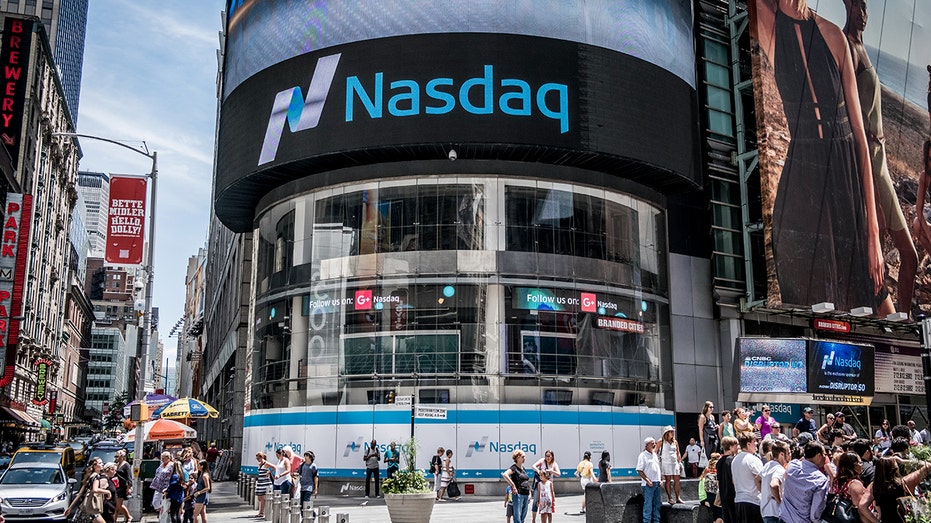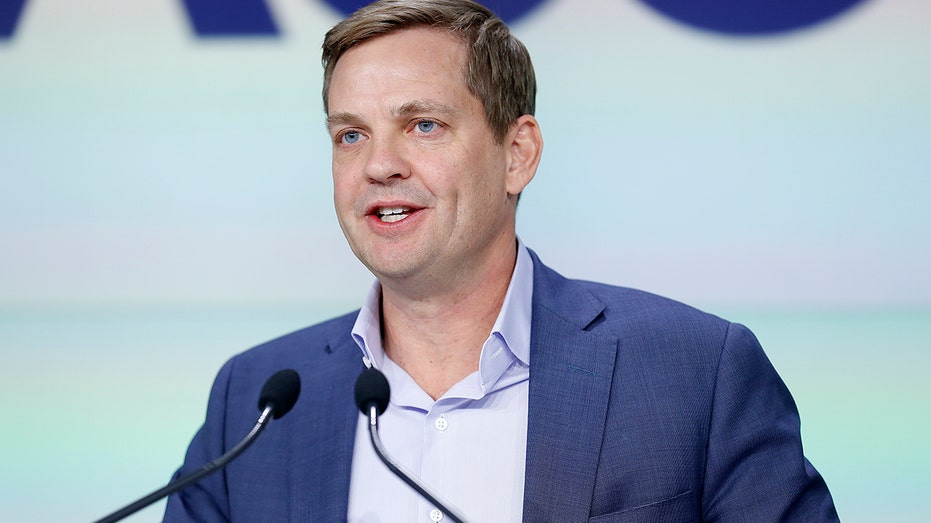Nasdaq on track to beat New York Stock Exchange for initial public offerings
IPOs at Nasdaq have raised $191 billion this year through Friday
Nasdaq Inc. NDAQ -0.55% is poised to beat the New York Stock Exchange in initial public offerings this year, far outpacing its crosstown rival during a record year for capital raised in U.S. public markets.
IPOs at Nasdaq have raised $191 billion this year through Friday, compared with $109 billion for new listings at the NYSE, according to Dealogic. Nasdaq’s commanding lead with only a few weeks left in 2021 means it is likely to beat the Big Board for the third year in a row.
Advisers to companies holding IPOs say one factor that helped Nasdaq this year was its effort to brand itself as the exchange focused on ESG—environmental, social and governance—criteria. The NYSE, meanwhile, was hurt by Covid-19 restrictions on its historic trading floor, which made it harder for companies to hold splashy bell-ringing ceremonies.
JOB OPENINGS, CONSUMER PRICES, COSTCO AND GAMESTOP EARNINGS TOP WEEK AHEAD

The Nasdaq building in Time Square, New York, in July 2017. (Avalon/Universal Images Group via Getty Images / Getty Images)
For years, Nasdaq was the underdog in the two exchanges’ fierce competition for new listings. During the two decades leading up to 2019, there were only three years in which more money was raised at Nasdaq than at the NYSE, Dealogic data show. Two of those years were 1999 and 2000, the peak of the dot-com bubble when buzzy technology companies flocked to Nasdaq.
In 2021, Nasdaq won the year’s biggest IPO: the $13.7 billion debut of electric-vehicle maker Rivian Automotive Inc. Other IPOs at Nasdaq included the debuts of brokerage Robinhood Markets Inc., HOOD -10.95% dating-app maker Bumble Inc. BMBL -1.70% and doughnut chain Krispy Kreme Inc. DNUT 10.80%.
Nasdaq vaulted ahead of NYSE in the booming business of listing special-purpose acquisition companies, or SPACs—shell companies that go public to raise cash for mergers and acquisitions. Nasdaq has won 63% of proceeds raised in SPAC IPOs so far in 2021, up from 39% last year, Dealogic data show. Listings of new SPACs have accounted for about half of the roughly $300 billion raised in IPOs this year.
"This has been a tremendous year for new listings at the New York Stock Exchange, setting our second-straight record for proceeds raised and welcoming many of the world’s most innovative and well-governed companies to our NYSE community," an NYSE spokesman said.
The NYSE’s biggest IPOs this year have been those of South Korean e-commerce company Coupang Inc. CPNG 1.53% and Chinese ride-hailing group Didi Global Inc. DIDI -22.18% Didi said last week it plans to delist its shares in the U.S. and pursue a listing in Hong Kong.
Last year, IPOs raised a total of $168 billion across both exchanges, according to Dealogic, which was then a record.
It makes little difference to investors whether a stock is listed on Nasdaq or NYSE. But it is a big business for the two exchanges.

The New York Stock Exchange building on Wall Street, downtown Manhattan, on July 2, 2017. (LOIC VENANCE/AFP via Getty Images / Getty Images)
During the first nine months of this year, Nasdaq earned $282 million from listing fees, while NYSE parent Intercontinental Exchange Inc. ICE -0.78% made $356 million. The NYSE generally charges higher listing fees than Nasdaq; fees at both exchanges are determined on a sliding scale based on a company’s number of shares outstanding. Attracting new listings also can boost an exchange’s trading and market-data revenues.
To woo companies, the NYSE and Nasdaq offer investor-relations services, such as tools for hosting earnings calls, and marketing packages that include advertising time with various media outlets. On IPO days, the NYSE typically drapes the front of its building in lower Manhattan with giant banners hailing the company that is going public, while Nasdaq emblazons the company’s logo on its digital billboard overlooking Times Square.
Many of the companies that called themselves "mission driven" or invoked ESG in their IPO filings listed on Nasdaq this year. Those included sneaker maker Allbirds Inc., BIRD -11.70% clothing-rental company Rent the Runway Inc. and Rivian. Yogurt maker Chobani Inc. said in a recent regulatory filing that it, too, plans to list shares on the Times Square exchange.
A person close to many do-gooder company IPOs said Nasdaq made a stronger pitch in regards to ESG, helping sway some executives to choose the exchange.
In August, the Securities and Exchange Commission approved a change to Nasdaq’s listing rules aimed at pushing companies to achieve more gender and racial diversity on their boards. The rule has provoked ire from Republican lawmakers and lawsuits from conservative groups, and Nasdaq executives acknowledge that it prompted complaints from some companies. Still, IPO advisers say the rule helped Nasdaq attract companies led by younger management teams focused on ESG goals.
CLICK HERE TO READ MORE ON FOX BUSINESS
"Nasdaq looks more progressive in the area of corporate governance," said Patrick Healy, CEO of Issuer Network LLC, which advises companies on their choice of listing exchange. "The diversity rule is helping them."
The NYSE set up an advisory council in 2019 that aims to help its listed companies identify board candidates from diverse groups. But the Big Board has stopped short of mandating greater diversity through its listing rules.
The 229-year-old NYSE operates one of the world’s last stock-exchange trading floors, unlike Nasdaq, which runs an electronic market. The Big Board has long said that the blue-jacketed traders on its floor help ensure smooth trading by providing human oversight at critical moments such as IPOs and the daily open and close of trading.
It became tougher to make that argument after the pandemic forced a two-month shutdown of the NYSE floor last year. The exchange’s markets ran in all-electronic mode and functioned smoothly. "It’s hard to tell people that you need the floor when you didn’t have it for a long time," Nasdaq Stock Exchange President Nelson Griggs said in an interview.
CLICK HERE TO GET FOX BUSINESS ON THE GO

Nelson Griggs of NASDAQ speaks as ViacomCBS Inc. rings the opening bell at Nasdaq on Dec. 5, 2019, in New York City. (John Lamparski/Getty Images / Getty Images)
The NYSE spokesman said: "Everyone knows stocks trade better on the NYSE, and our trading floor is a key reason why."
The floor partly reopened in June 2020, and its population is now at about 75% of pre-pandemic levels. Covid-19-related restrictions remain in effect, including a requirement that visitors show proof of vaccination. So while bell ringings have resumed, it has been harder for the Big Board to host lavish IPO parties like those before the pandemic. That has reduced an edge that the NYSE long enjoyed over Nasdaq, which hosts its own bell ringings in a modern, television-studio-like space off Times Square.
Not all companies care about the bell. When chip maker GlobalFoundries Inc. GFS 4.89% was choosing between Nasdaq and the NYSE, the services that the exchanges offered after the IPO were more important than the ceremony itself, said Sukhi Nagesh, the company’s vice president of corporate development and investor relations.
GlobalFoundries made its debut on Nasdaq in October. "It’s a point in time," Mr. Nagesh said. "A lot of people want to ring the bell at the NYSE, but it is nice to push the button at Nasdaq, too."




















